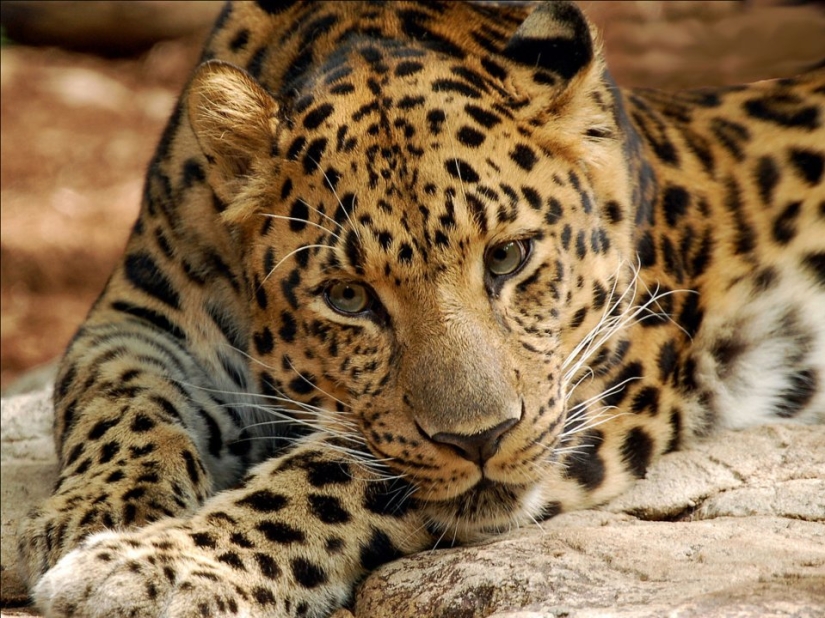12 Signs We're In The Middle Of The 6th Mass Extinction
Categories: Animals | News | World
By Angela https://pictolic.com/article/12-signs-were-in-the-middle-of-the-6th-mass-extinction1.html
1. Insects are dying out at a record rate. Approximately 40% of insect species in the world are in the stage of extinction.
If this trend continues, by 2119 there may not be any insects on Earth at all.

2. The earth appears to be undergoing a process of "biological destruction". As many as half of the total number of animals that once shared the Earth with humans have already disappeared.
Some species are facing complete collapse, while certain local populations are dying out in certain areas. It's still worrisome, as the study's authors say these localized population extinctions are "a prelude to species extinction."

3. According to the Red List of the International Union for Conservation of Nature, more than 27% of all assessed species on the planet are endangered. Currently, 40% of the planet's amphibians, 25% of mammals and 33% of coral reefs are endangered.
According to the International Union for Conservation of Nature's Red List, over 27% of all assessed species on the planet are threatened with extinction. Currently, 40% of the planet's amphibians, 25% of mammals and 33% of coral reefs are endangered.

4. A 2015 study that examined species of birds, reptiles, amphibians and mammals concluded that the average extinction rate over the past century is 100 times higher than normal.
Elizabeth Colbert, author of The Sixth Extinction, told National Geographic that the prospects for this study are dire; this means that 75% of animal species could become extinct within a few human lifetimes.

5. In about 50 years, 1,700 species of amphibians, birds and mammals will face a higher risk of extinction as their natural habitat shrinks.
By 2070, 1,700 species will lose 30% to 50% of their current ranges due to human land use, a 2019 study found. In particular, 886 amphibian species, 436 bird species and 376 mammal species will be affected and therefore at greater risk of extinction.

6. Deforestation of the Amazon rainforest is of particular concern.
According to the World Wide Fund for Nature, approximately 17% of the Amazon has been destroyed in the past five decades, mainly due to the fact that people cleared vegetation to open the land for cattle ranching. Even deforestation in a small area can lead to the extinction of an animal, since some species live only in small isolated areas.

7. According to one study, over the next 50 years, humans will destroy so many species of mammals that the evolutionary diversity of the Earth will not be restored for about 3 million years.
The scientists behind this study, which was published in 2018, concluded that after this loss, it would take our planet 3 to 5 million years at best to return to the level of biodiversity we have on Earth today.

8. Alien species are the main cause of species extinction.
Many invasive alien species have been unintentionally spread by humans. Humans may carry alien species with them from one continent, country, or region to another when they travel. Transportation of goods and cargo can also contribute to the spread of the species.

9. The oceans absorb a lot of the excess heat generated on Earth due to greenhouse gases in the atmosphere. This is killing marine species and coral reefs.
As a result, coral reefs - and the marine ecosystems they support - are dying. Worldwide, about 50% of the world's reefs have died in the past 30 years.

10. Freshwater species are also affected by a warming planet.
A 2013 study found that 82% of native freshwater fish species in California were vulnerable to extinction due to climate change.

11. Warming oceans are also causing sea levels to rise. Rising waters are already affecting the habitats of vulnerable species.
In February, Australia's Minister for the Environment officially declared a rodent called Melomys Bramble Cay the first species to become extinct due to human-induced climate change, in particular rising sea levels.

12. Warming oceans are also causing unprecedented melting of Arctic and Antarctic ice, further contributing to sea level rise. In the US, 17% of all species are endangered due to rising sea levels.
In a worst-case scenario, warmer waters could cause the glaciers holding back the Antarctic and Greenland ice sheets to collapse. This will lead to massive amounts of ice in the oceans, which could lead to rapid sea level rise worldwide.
Keywords: EXTINCTION | MASS EXTINCTION | SIXTH MASS EXTINCTION | ENVIRONMENTAL DISASTER
Post News ArticleRecent articles

There are many places in the world where only the chosen ones can be. The cities of Mecca and Medina in Saudi Arabia are well known ...

This collection of photos will clearly please the little inner perfectionist who lives in each of us. It doesn't matter how much ...
Related articles

Australia is famous not only for the fact that almost all living things there dream of killing a person. Even on the Green ...

Polish photographer and traveler Adam Goat presented an ambitious project about the residents ischezaushei tribes. Traveling the ...

The last Tasmanian wolf — marsupial mammal with a dog's head — has died in an Australian zoo in 1936. And although for a long ...

If you don't feel good about the donut you ate for lunch, relax - it can get worse ... At least you didn't eat the ...